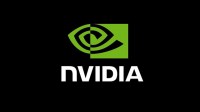Nvidia President and CEO Jensen Huang said the company will be upgrading its AI accelerators annually, with the Blackwell Ultra processor coming in 2025 and a next-generation platform called Rubin that is still in development planned for 2026. Rubin AI will utilize a type of high-bandwidth memory called HBM4 that addresses a bottleneck that has stifled the production of AI accelerators. Huang shared the news from Taiwan, where he delivered a keynote at the Computex trade show. Nvidia Inference Microservices were another focus, allowing AI applications to be deployed in minutes instead of weeks, Huang said.
Huang said 28 million global developers can download Nvidia NIM, which Huang calls “AI in a box” and VentureBeat describes as “inference microservices that provide models as optimized containers, to deploy on clouds, data centers or workstations” to build generative AI applications for things like chatbots, copilots and more.

“The future of computing is accelerated computing,” Huang said, speaking before 6,500 technology professionals and enthusiasts in Taipei. “With our innovations in AI and accelerated computing, we’re pushing the boundaries of what’s possible and driving the next wave of technological advancement.”
As generative AI applications become more complex — sometimes combining multiple models with different specialties — the pressure is on to increase speed and standardization. Nvidia says NIM is a simple, immediate way to address that.
“For example, running Meta Llama 3-8B in a NIM produces up to three times more generative AI tokens on accelerated infrastructure than without NIM,” which translates to “the same amount of compute infrastructure to generate more responses,” VentureBeat says.
“Nvidia has been the main beneficiary of a massive flood of AI spending, helping turn the company into the world’s most valuable chipmaker, but it now looks to broaden its customer base beyond the handful of cloud-computing giants that generate much of its sales,” Bloomberg writes, noting that “as part of the expansion, Huang expects a larger swath of companies and government agencies to embrace AI — everyone from shipbuilders to drug developers.”
The company that got its start supplying graphics cards to video gamers announced at Computex general availability of Nvidia ACE generative AI microservices, accelerating “the next wave of digital humans” for use in applications including customer service, telehealth, gaming and entertainment.
Nvidia is also working on AI assistants to help play PC games, reports The Verge, talking about a “GeForce AI assistant” for the company’s popular graphics card line that the company is contemplating making available for game developers and RTX GPU owners.
Project G-Assist, previewed at Computex, could someday add AI assistants to GeForce RTX AI PCs. Though currently “only a tech demonstration,” Project G-Assist provides “a brief look at how an AI assistant could guide you through PC games and even configure optimal settings for you based on chat inputs in the future,” The Verge writes, adding that Microsoft is working on a similar technology for its Xbox platform.
Microsoft was also at Computex, showcasing the recently announced Copilot+ AI laptops with its hardware partners. “The majority of those devices coming to market are based on a new type of processor that will enable them to go longer on one battery charge, provided by Nvidia rival Qualcomm,” Bloomberg says.
Nvidia is, however, working with AMD to bring Asus Copilot+ gaming laptops, The Verge writes.
Related:
Nvidia and AMD Unveil Next Generation AI Chips as Competition Heats Up, CNN, 6/4/24
Nvidia Dominates the AI Chip Market, but There’s More Competition Than Ever, CNBC, 6/2/24
Nvidia Is All in on AI at Computex with New Copilot Features and Tools, Tom’s Guide, 6/2/24

No Comments Yet
You can be the first to comment!
Leave a comment
You must be logged in to post a comment.